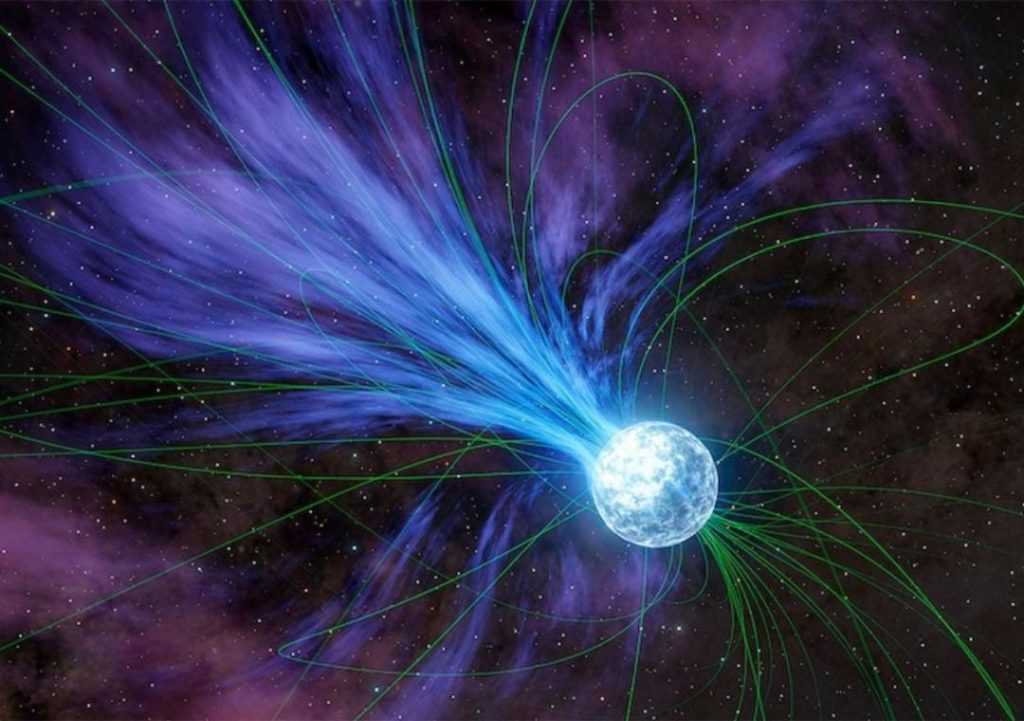
Gold & Platinum Created through Neutron Stars’ Explosions: Study
For centuries, humans have been fascinated by the origins of precious metals like gold and platinum. Where did they come from? How were they formed? These questions have puzzled scientists and researchers for years. Recently, a team of scientists led by Columbia University student Anirudh Patel has made a groundbreaking discovery that sheds light on the origins of these valuable elements. According to the study, magnetars or highly magnetized neutron stars played a crucial role in the creation of gold and platinum through their explosive events.
The Discovery
The study, published in the journal Nature Astronomy, reveals that magnetars exploded approximately 20 years ago, releasing flares that contained gold and platinum. This explosive event is believed to have occurred in the Milky Way, our home galaxy. The study’s findings suggest that these explosions happen about once a decade in the Milky Way and annually across the observable universe.
Magnetars are a type of neutron star that is characterized by its extremely strong magnetic field. When these stars explode, they release an enormous amount of energy in the form of flares, which can travel vast distances across space. The study’s researchers used data from NASA’s Fermi Gamma-Ray Space Telescope to detect the gamma-ray flares emitted by these explosions.
The Process of Creation
So, how did gold and platinum come to be created through these explosive events? The process is complex and involves the interaction of high-energy particles and radiation with the surrounding environment. When a magnetar explodes, it releases a massive amount of energy in the form of gamma rays, which collide with the surrounding gas and dust.
These collisions create high-energy particles, including protons and neutrons, which are then accelerated to incredible speeds. As these particles travel through space, they interact with the surrounding environment, including other particles and radiation. This interaction leads to the formation of heavier elements, including gold and platinum.
The Significance of the Discovery
The discovery of gold and platinum creation through magnetar explosions has significant implications for our understanding of the origins of these precious elements. For centuries, scientists have been trying to determine how gold and platinum were formed. The new study provides a clear mechanism for their creation, which had previously been unknown.
The discovery also sheds light on the origins of other heavy elements, including those found in the Earth’s crust. The process of creation described in the study can be applied to other explosive events, such as supernovae and gamma-ray bursts, which are also thought to play a role in the creation of heavy elements.
Implications for the Search for Life
The discovery of gold and platinum creation through magnetar explosions also has implications for the search for life in the universe. The presence of these elements in the Earth’s crust is a key factor in the emergence of life as we know it. The study’s findings suggest that the creation of these elements through explosive events may have played a crucial role in the emergence of life on Earth.
Conclusion
The study led by Anirudh Patel and his team has made a groundbreaking discovery that sheds light on the origins of gold and platinum. The creation of these precious elements through magnetar explosions is a complex process that involves the interaction of high-energy particles and radiation with the surrounding environment. The discovery has significant implications for our understanding of the origins of these elements and the emergence of life in the universe.
News Source:






